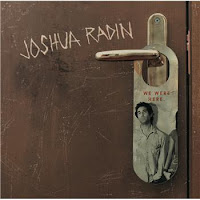Design affects our surrounding world; it affects people's everyday lives. In some cases, design is utopian, aiming to improve society. This is the case for a coalition called Complete Streets. The National Complete Streets Coalition's goal is to change the orientation of streets away from primarily being designed for cars. It was funded by Bikers Belong Coalition and Blue Cross Blue Shield of Minnesota, who are advocates for biking and walking.
So what IS a "complete street"? A complete street is designed for safety and accessibility for ALL users, including pedestrians, bicyclists, disabled persons, cars, and public transit riders of all ages and abilities. The Complete Street website states that complete streets could include, "sidewalks, bike lanes (or wide paved shoulders), special bus lanes, comfortable and accessible transit stops, frequent crossing opportunities, median islands, accessible pedestrian signals, curb extensions, and more." (http://www.completestreets.org/complete-streets-fundamentals/complete-streets-faq/)
Here is an example of a complete street.
 |
| Image from: http://www.easterdayconstruction.com/blog/wp-content/uploads/2010/10/Complete-Streets-Example-Picture.jpg |
The design of complete streets is utopian because it aims to improve society in a few different ways. First, complete streets provide safety for pedestrians, bicyclists, and disabled persons. According to Transportation for America and the Surface Transportation Policy Project, there were over 76,000 pedestrian deaths in the U.S. in the last 15 years. St. Petersburg, Florida used to be one of the most dangerous places for pedestrians traveling the streets because of poor road design. Now, after implementing smart design and techniques to prevent pedestrian deaths, the fatalities are half of what they used to be. (http://thenationshealth.aphapublications.org/content/39/10/1.1.full) With adequate and comfortable space for all users, there is greatly increased safety.
Promoting alternative modes of transportation in a place, such as walking and biking, increase physical activity of the residents. Physical activity is important, we all know that, but the amount of increased physical activity due to manual transportation is surprising. The Complete Street website reports that, "One study found that 43% of people with safe places to walk within 10 minutes of home met recommended activity levels; among individuals without safe place to walk, just 27% were active enough."
Another way complete streets improve society is addressing climate change and oil dependency. People making more trips on foot or bicycle rather than oil dependent motorized vehicles will significantly lower carbon emissions.
Complete streets also lead to stronger communities. With safe, comfortable routes for people not in cars, they are more likely to communicate. These well-designed streets encourage community pride and involvement. Complete streets are clearly, for many reasons, utopian design.







































